Ever wondered why some businesses thrive while others falter? The answer often lies in how well a company manages its progression through the business lifecycle. Understanding the stages of this cycle can help business owners, entrepreneurs, and even investors make smarter decisions, overcome obstacles, and unlock their business’s full potential.
This guide will walk you through the key stages of the business lifecycle, discuss challenges unique to each phase, and provide actionable insights to help your business succeed.

What is the Business Life Cycle?
The business life cycle refers to the progression of a company through distinct stages—development, startup, growth, maturity, and decline (or renewal). Each stage brings new opportunities and challenges that influence decision-making, cash flow, market positioning, and long-term sustainability.
Understanding a company’s strategic planning in relation to the business life cycle is crucial. It helps in effectively directing operations and making informed decisions to either avoid decline or facilitate renewal.
Why is understanding the business life cycle so important? Because it allows businesses to:
Anticipate challenges at different stages
Plan strategies for consistent growth
Adapt to market changes with agility
Identify opportunities for strategic planning and innovation
For entrepreneurs and startups, grasping the nuances of this cycle can be the difference between failure and building a thriving business.

Stage One: Development and Startup
The first stage of the business life cycle begins with an idea—a spark of innovation or a solution to an unmet need in the market. This startup phase is often characterized by high energy, plenty of ambition, and significant risk-taking. Understanding the stages of business growth is crucial at this point to develop appropriate strategies and plan for future success.
Conceptualizing the Business Idea
At its core, this stage is all about conceptualization:
Identifying a problem or gap in the market
Developing a product or service that meets unmet needs
Crafting a business plan to define your vision, mission, and goals
For example, consider Airbnb. The concept began when its founders noticed a lack of affordable short-term accommodation options. Their business idea identified a clear market gap, setting them on the path to revolutionize travel.
Challenges in this Stage
Startup Costs: Securing adequate funding (through seed funding or outside investment capital) is often the biggest hurdle.
Market Penetration: Defining and reaching your potential customer base
Cash Flow: Balancing expenses with incoming revenue
This phase is an exciting time, but it’s essential to lay down a solid foundation. Entrepreneurs need to take precise steps, such as conducting market research, creating prototypes, and finding investment capital.

Stage Two: Growth Stage
Once an idea is proven viable, the business enters the growth phase. This stage is where things get exciting—your hard work pays off as revenue accelerates and your customer base expands. Investment bankers play a crucial role during this phase by providing expertise in financial strategies and helping to navigate the challenges of rapid growth.
Characteristics of the Growth Stage
Increased revenue streams and market penetration
A growing team to support operations and customer demands
Expansion into new markets or adding new products/services
When PayPal first launched, its initial growth stemmed from accelerating adoption by eBay users. By focusing on developing a sustainable business model, PayPal quickly gained traction in the market.
Strategies for Success
During this stage, businesses should:
Monitor Cash Flow carefully to maintain a strong cash position
Hire employees suited to your brand’s ethos and scalability goals
Focus on customer satisfaction and building long-term client relationships
Challenges in the Growth Stage
Managing rapid growth while maintaining service quality
Navigating the complexities of a larger team
Adapting the business model to accommodate new customers or internal processes efficiently
The growth stage is also an ideal time to integrate systems for automation and professional management to drive operational efficiencies.

Stage Three: Maturity and Decline (or Renewal)
Reaching the maturity stage signals that a business has hit its stride—it operates with stability, a stable customer base, and predictable revenue. But with success comes a new set of risks, such as market saturation or competition from younger, more agile businesses. Mature businesses benefit from strong brand awareness and security, but they also face challenges like the risk of stagnation and must consider strategies for expansion through market penetration or new product development.
Features of the Maturity Stage
Stable recurring revenue
Optimized internal processes and cost management
Established brand recognition
However, many businesses fail to innovate during this stage, leading to stagnation or decline. Companies must remain proactive and seek new opportunities to avoid declining market relevance.
Decline Phase or Renewal Efforts?
When businesses encounter challenges due to outdated products, growing competition, or changing consumer trends, they must decide whether to pivot toward renewal efforts.
Take Blockbuster, for example. By failing to adapt to the rise of streaming services, the company succumbed to market changes. On the other hand, Airbnb pivoted during the COVID pandemic, targeting longer-term stays and co-working travelers, emerging stronger than before.
Key Challenges
Market Saturation impacting revenue
Declining customer engagement
Increasing overhead costs without noticeable ROI
Renewal Strategies
Diversify product offerings to attract new customers.
Invest in R&D and innovation to maintain a competitive edge.
Explore partnerships or acquisition opportunities to expand market reach.

Navigating the Business Life Cycle
Success in navigating the business lifecycle hinges on thoughtful strategic planning. Here’s what business owners can focus on:
Strategic Tips to Navigate Each Stage
Startup Stage: Seek mentors or advisors to validate your business idea and help gain advisors who can support your vision.
Growth Stage: Build a scalable corporate structure and focus on balancing rapid growth with operational stability.
Maturity Stage: Reinvent your offerings and continually analyze customer needs to stay agile in a competitive market.
Importance of Adaptability
The business life cycle is rarely linear. External factors like economic downturns, changes in consumer preferences, or technological advances can disrupt even the best-laid plans. Remaining adaptable and innovative is key to staying ahead of challenges.
Learning from Case Studies
Airbnb
Airbnb’s trajectory exemplifies the power of creativity and adaptability. By focusing on user experience and fostering trust within its customer base, Airbnb successfully expanded its global reach and navigated economic uncertainties. Understanding the various stages of business growth allowed Airbnb to develop appropriate strategies, overcome unique challenges, and plan for future success.
Blockbuster
Blockbuster’s decline offers a stark contrast. The company’s failure to adapt to technological advancements or customer expectations highlights the importance of timing and innovation in business.
PayPal
PayPal adopted professional management strategies early and reinvested in technology, helping the company scale efficiently and secure its leaders in the payment industry.

Looking Ahead
No matter where your company stands in the business life cycle, understanding these stages equips you with a roadmap for growth and adaptability. By carefully assessing your current position and formulating tactical strategies, you can overcome challenges and thrive.
Are you a startup aiming for growth or a mature business looking to renew your competitive edge? Meticulous planning and informed decisions are the foundation of success. Begin your strategic planning now—there’s no better time to unlock your business potential.
Resources
To help your business navigate its unique path, we’ve compiled a list of valuable resources:
Harvard Business Review – Business Life Cycle Strategies: Deep insights into managing and thriving through different stages of the business life cycle.
SCORE – Free Business Mentoring and Advice: Access free mentoring and tools tailored to support startups and established companies.
Entrepreneur – Growth Strategies: Explore articles and guides focused on scaling your business and staying competitive.
Small Business Administration (SBA) – Resources for Businesses: Government resources for funding, training, and managing your business effectively.
Forbes – Leadership and Innovation: Stay updated with thought leadership on innovation and long-term growth strategies.
Inc. – How to Build a Resilient Business: Gain practical tips and strategies for building a business that can withstand challenges and market changes.
LinkedIn Learning – Professional Development Courses: Access courses on leadership, management, and essential business skills to help you grow personally and professionally.
McKinsey & Company – Insights on Business Trends: Explore comprehensive reports and analyses on global business trends and actionable strategies.
HubSpot – Marketing and Sales Resources: Learn about inbound marketing, effective sales techniques, and tools to attract and retain customers.
Fast Company – The Future of Work and Innovation: Discover articles on emerging trends, workplace innovation, and creative solutions for modern businesses.
These tools and platforms can serve as a foundation for refining your strategies and achieving sustainable success. Take advantage of them to advance your business goals today!

